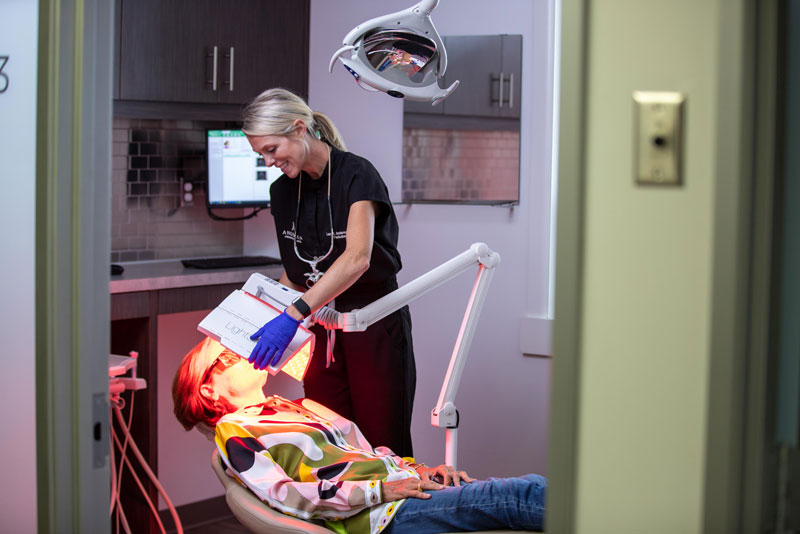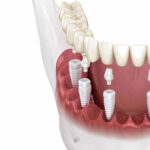Caring for your periodontal needs is essential, especially if you have gingivitis or periodontitis. However, it can be intimidating to hear about common periodontal procedures such as scaling and root planing or osseous surgery. Yet it is important to know that a few forward-leaning periodontists focus on practicing minimally invasive periodontics in Bloomfield Hills, MI to ensure you have the most comfortable experience possible during your office visits.
Understanding the Minimally Invasive Periodontics Philosophy
What does the term “minimally invasive” mean in terms of periodontics? The descriptor refers to a very conservative approach to treatment.
Consider a patient who has developed gum recession. Periodontists have a few options to help the patient. A periodontist who believes in practicing minimally invasive periodontics will suggest the treatment that is gentlest on the patient.
For instance, the tunneling technique is a minimally invasive solution to restore the gums to a healthier level. If a patient is not a good candidate for the tunneling technique, the periodontist will recommend another treatment that is going to cause the least disruption to the patient’s teeth, gums, and body system in general.
As you might imagine, the benefits of minimally invasive periodontics are widespread. Patients feel more relaxed during their procedures, their bodies heal faster, and the tissues have a lowered chance of developing scar tissue. At the same time, the underlying condition—whether early-stage gum disease or a gummy smile—is treated in the most appropriate, physically kind way.
Where Does Minimally Invasive Periodontics Fit in With the History of Periodontics?
For decades, periodontists had limited periodontal treatment methods to choose from to help their patients find relief. And as noted in one published abstract, periodontists have only been moving toward more minimally invasive treatments for the past 50 years. Before that time, periodontists often applied more radical gum disease treatments that occasionally left patients with fewer teeth. Plus, those treatments did not always keep the gum disease from recurring.
By the 1980s and 1990s, minimally invasive dental practices started to become more talked about at the medical school level. The thought process was simple and straightforward: Could superior outcomes for dental patients be achieved without causing unnecessary physical (or, in the case of patients with anxiety, psychological) trauma? As it turns out, they could and can.
How Does Our Practice Approach Minimally Invasive Periodontics?
If you were to take a poll of periodontists around the country, you would find that few have fully embraced minimally invasive periodontics. Instead, they continue to perform treatments that work but leave the patients with more bruising, swelling, and chance of post-treatment discomfort. Yet some pioneering periodontists like Dr. Lauren Anderson are leading the way in making minimally invasive approaches a mainstay of periodontal practices.
Dr. Anderson has a wealth of experience in the field of periodontics and concentrates on studying the newest techniques to bring to her patients. Her belief is that as more modern, safe, and minimally invasive approaches to treatment become available, those approaches should be made available to patients. As such, she takes the time to learn about the latest minimally invasive periodontics solutions and offer them to her patients.
A good example is a technique for surgeries referred to as the “MIST” protocol. “MIST” stands for “minimally invasive surgical therapy.” During a MIST treatment for gum disease, the gum is not opened all the way. By using smaller tools and microsurgery principles, Dr. Anderson can give the patient exceptional, dependable results without aggressive manipulation of the soft tissue.
It is worth mentioning that technology has helped make the MIST protocol and other minimally invasive periodontal treatments a reality. Lasers, tiny equipment, and other items that would not have been available decades ago are now available to periodontists.
Choose a Periodontist Who Believes in Minimally Invasive Periodontics in Bloomfield Hills, MI
If you believe you need the help of a periodontist to diagnose and treat your gum disease or other issues related to your mouth and gums, consider making an appointment at Anderson Periodontal Wellness. Our practice in Bloomfield Hills, MI has been built around the concept of leaning into minimally invasive approaches to give patients better outcomes and experiences throughout the gum disease management process. Contact our team today by calling (248) 480-4910!





